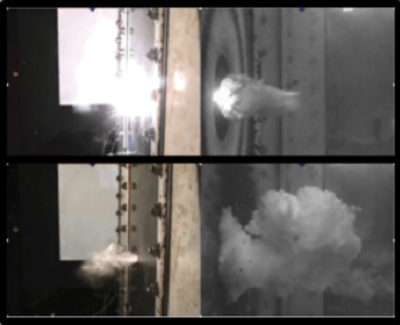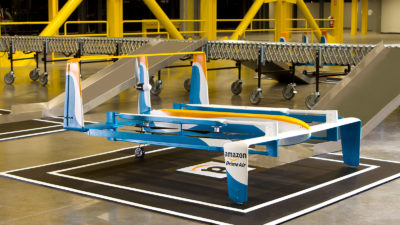Demonstrating new plasma and laser-based technologies for multiple applications
By SALLY BANE AND JOSEPH W. ZIMMERMAN|December 2020
The Plasmadynamics and Lasers Technical Committee works to apply the physical properties and dynamic behavior of plasmas to aeronautics, astronautics and energy.
The year was an outstanding one for research and applications development related to plasma and lasers, with notable highlights related to novel technologies in a variety of fields from high-speed combustion to plasma sterilization.
University of Florida researchers working with SurfPlasma Inc. of Gainesville made advances in applications for dielectric barrier discharge, DBD, plasmas. In January, the team introduced a novel fan-shaped plasma reactor for mixing enhancement of plasma reactive species. To demonstrate effectiveness on aerospace surfaces such as assembly cleanroom facilities or spacecraft components, the team exposed various pathogens to flows from plasma devices within a closed chamber. They demonstrated a five to eight logarithmic reduction in several pathogens, including MRSA, pseudomonas aeruginosa and other bacteria, fungi and spores within minutes. The researchers also invented a compact portable plasma reactor and demonstrated it for food preservation and water purification. They reported that it inactivated surrogate human coronaviruses representative of SARS-CoV2, the virus that causes covid-19, in air and on porous, contoured surfaces.
In September, the same researchers reported encouraging results from rotor-blade tip vortex experiments using arrays of serpentine and fan shaped DBD actuators embedded in a Hughes Helicopters HH02 airfoil. The actuators produced counter-rotating vortices in the boundary layer, demonstrating up to 62% reduction in tip vortex strength for freestream Reynolds numbers of 200,000 to 500,000. These results predict as high as 14.5 decibel reduction in overall sound pressure level due to blade-vortex interaction, thus making these actuators appealing for NASA’s Advanced Air Mobility project that includes urban air mobility research in which rotorcraft noise reduction will be a key for public acceptance.
In January, the High Enthalpy Flow Diagnostics Group at the Institute of Space Systems in Stuttgart, Germany, reported on measurements of molecular oxygen using laser-based polarization spectroscopy, which the authors say is the first demonstration of molecular oxygen detection using this technique. Researchers demonstrated the technique using a high-power microwave plasma torch. Coherent laser diagnostics such as this are crucial for understanding energy distribution in plasma flows used for simulation of atmospheric entry conditions.
In April, researchers from Texas A&M University in collaboration with Colorado State University and Princeton University in New Jersey reported on continued development of a dual-pulse laser ignition concept relevant for improved ignition in internal combustion engines and supersonic combustors. The concept is based on the combination of ultraviolet and near-infrared laser pulses. By tailoring both the energy deposition and heating, this technique allows triggering optical breakdown, minimizes energy requirements and decreases the minimum ignition energy. The research suggests that dual-pulse laser generated plasma could be an efficient tool for controlling dynamics of the ignition kernel, shortening the ignition delay time and providing additional mixing enhancement in high-speed flows.
In June, University of Notre Dame researchers further developed their plasma injection modules technology for plasma-assisted supersonic combustion. Researchers applied the acetone planar laser-induced fluorescence technique in the university’s Supersonic Blowdown Rig-50 and demonstrated significant enhancement of fuel/air mixing in the Mach 2 flow through application of longitudinal filamentary plasmas collocated with the fuel jet.
In July, researchers at Purdue University in Indiana reported on a new spectroscopic thermometry technique that applies a probing nanosecond plasma pulse to determine rotational and vibrational temperatures from ultraviolet emissions of nitrogen molecules. This technique applies well-known optical emission spectroscopy techniques of nitrogen but uses a plasma generated at a tungsten electrode gap as a temperature probe. Researchers anticipate that the technique can be applied in modern combustion systems for fast temperature measurements.
In late May, the U.S. National Academies of Sciences, Engineering, and Medicine delivered the 2020 Decadal Plasma Assessment, which reviewed the last decade of achievements in plasma research and development and offered suggestions to federal agencies, policymakers and academics for future research and workforce development related to plasma science and engineering.
Contributors: Sergey Leonov, Stefan Loehle, Subrata Roy, Alexey Shashurin and Albina Tropina



































